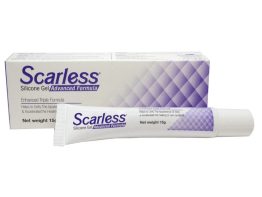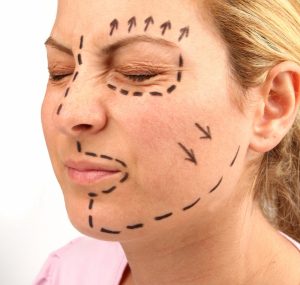Scars are a natural part of the skin’s healing process, but they can sometimes leave behind marks that are hard to ignore. With so many scar treatment options, choosing the best one can be overwhelming, especially considering your unique skin type. Here’s a simple guide to help you pick the right treatment for your skin.
Understand Your Skin Type
Before choosing a scar treatment, knowing your skin type is important, as some treatments may work better for specific skin types. Here are the common skin types:
- Oily Skin: Oily skin is prone to excess sebum, clogged pores, and acne, which can lead to more scars from acne breakouts.
- Dry Skin often feels tight and may flake. Because it lacks natural moisture, dry skin may take longer to heal from scars.
- Sensitive Skin: Easily irritated by products, sensitive skin needs gentler treatments.
- Normal Skin: Well-balanced with fewer issues, normal skin can tolerate a wider range of treatments.
Identify the Type of Scar
Different types of scars respond to different treatments. Knowing which type of scar you have will help you narrow down your options:
- Atrophic Scars: Includes acne scars, chickenpox scars, or scars from injuries that leave indented marks on the skin.
- Hypertrophic Scars: Raised and thick scars that form after surgery or injury.
- Keloid Scars: Overgrown scar tissue that can extend beyond the original wound.
- Contracture Scars: Caused by burns, these scars can tighten the skin and affect movement.
Choose the Right Treatment for Your Skin Type
Scar Treatments for Oily and Acne-prone Skin
- Silicone Gels: Finding a scar treatment that doesn’t exacerbate oil production or clog pores can be challenging for individuals with oily and acne-prone skin. Silicone gels, such as Scarless Silicone Gel, are an excellent option for this skin type due to their lightweight nature and ability to treat scars effectively without causing breakouts or irritation.
- Chemical Peels: Mild chemical peels containing salicylic acid are particularly effective for acne-prone skin. Salicylic acid, a beta-hydroxy acid (BHA), penetrates deep into the skin, helping to reduce oil production, clear out clogged pores, and diminish acne scars.
- Microdermabrasion: This non-invasive procedure gently exfoliates the skin’s surface, improving skin texture and reducing mild acne scars. It’s also beneficial for controlling oiliness and clearing clogged pores, making it a great choice for oily, acne-prone skin.
Scar Treatments for Dry Skin
- Moisturizing Scar Gels: For individuals with dry skin, Scarless Gel provides a combination of powerful emollients and conditioning agents, such as squalane and Tetrahexyldecyl Ascorbate (Vitamin C), that offer deep hydration. These ingredients help keep the skin soft, supple, and well-moisturized while supporting scar healing.
- Silicone-Based Products: Scarless Gel’s high concentration of silicones forms a breathable barrier that locks in moisture, preventing the skin from becoming dry or irritated during the healing process.
Scar Treatments for Sensitive Skin
- Hypoallergenic Silicone Gels: Hypoallergenic silicone gels, like Scarless Gel, are specially formulated to avoid unnecessary chemicals, preservatives, fragrances, and dyes that can irritate sensitive skin. They provide gentle healing by forming a breathable, protective barrier over the scar and are safe for long-term use. Additionally, their non-comedogenic nature ensures they won’t clog pores or cause further inflammation.
- Gentle Vitamin C Serums: Vitamin C serums are effective for lightening scars and reducing hyperpigmentation, but sensitive skin types should choose products specifically designed for sensitive skin to avoid irritation.
Scar Treatments for Normal Skin
- Silicone Gels: Silicone gels are effective for all skin types, including normal skin. They help flatten and soften hypertrophic and keloid scars, promoting smoother skin.
- Chemical Peels: For individuals with normal skin, chemical peels can be an effective treatment for mild to moderate scars, such as acne scars, fine lines, and pigmentation issues. Depending on the strength of the peel, it can target different layers of the skin to improve its texture and tone.
Factors to Consider
- Age of the Scar: Fresh scars respond better to treatments, while older scars may take longer to fade.
- Consistency: Most treatments require regular application over several weeks or months to show visible results.
- Sun Protection: Scar tissue is more sensitive to UV rays, so applying sunscreen is crucial when treating scars. Look for a broad-spectrum sunscreen with SPF 30 or higher.
Conclusion
Choosing the best scar treatment for your skin type doesn’t have to be complicated. By understanding your skin type and the kind of scar you have, you can find the most effective treatment for your specific needs. Whether it’s silicone gels, moisturizing creams, or professional treatments like chemical peels, the right approach will help you improve the appearance of your scars and restore your confidence.
-
Product on sale
 Scarless Silicone GelOriginal price was: $ 43.00.$ 34.95Current price is: $ 34.95.
Scarless Silicone GelOriginal price was: $ 43.00.$ 34.95Current price is: $ 34.95.


